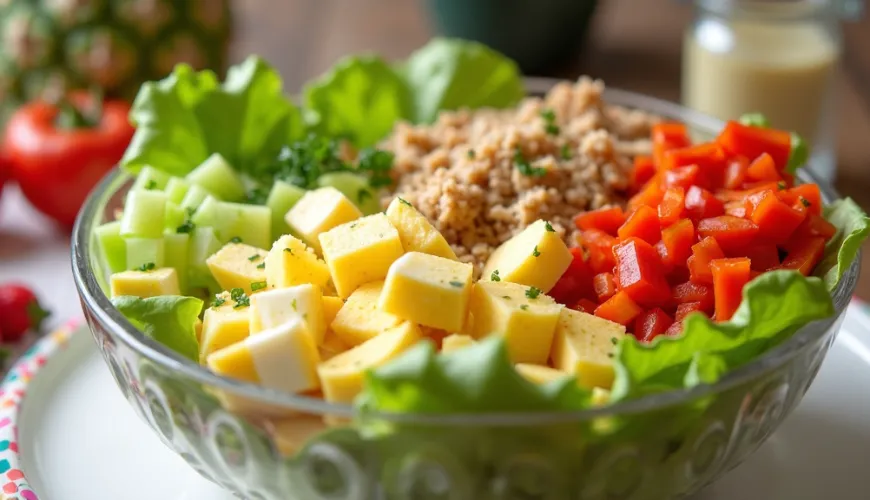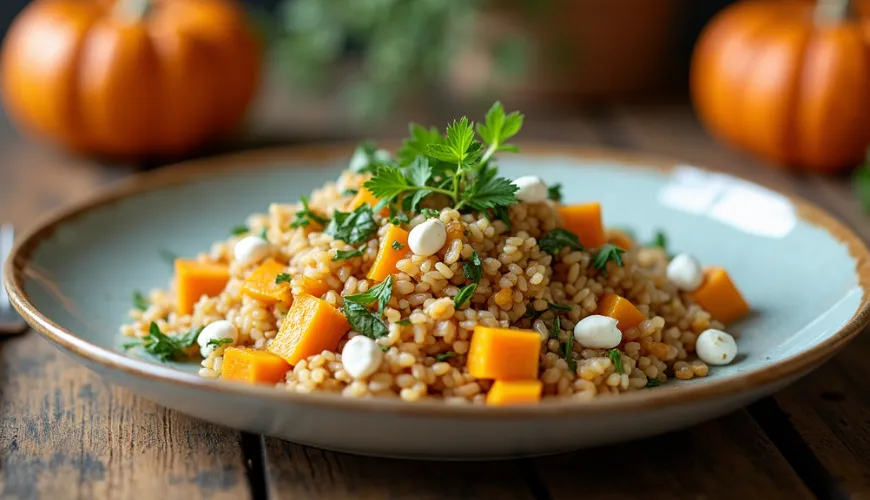
Discover the magic of layered salad and turn cooking into art

When Salad Becomes Art - The Magic of Layered Salads
Layered salad is a phenomenon that has been experiencing a renaissance in recent years. Instead of simply mixing ingredients in one bowl, it offers an aesthetic and taste experience – each layer has its place, color, and texture. Such a salad is not only a healthy dish but also a table decoration. Layered salads are suitable for festive occasions as well as for everyday lunches or light dinners. And the best part? You can prepare them in advance and let them chill, allowing the flavors to beautifully meld together.
The basic concept of a layered salad is simple: you layer individual ingredients in a deep bowl or glass container so that the components don't mix but still complement each other. The result is a visually pleasing mosaic of flavors. Layered salads often include vegetables, legumes, cheeses, eggs, dressings, and sometimes fruit or nuts. The key is the balance of flavors and textures – crunchy, fresh, soft, and juicy components should complement each other in the salad.
Why Have They Become So Popular?
At first glance, it may seem like it's just about aesthetics – and indeed, a layered salad in a transparent bowl looks like a colorful stained glass and immediately catches the eye. But there are more reasons why people love layered salads. Above all, it’s a very practical method of preparation. If you're expecting guests, you can prepare the salad in the morning, store it in the fridge, and serve it in the evening – without any last-minute cooking.
Another benefit is the ability to customize the composition. There is no single correct recipe – you can use what you have at home. Leftover cooked vegetables? Smoked tofu? Raw carrot? A can of chickpeas? Everything can be layered to create a harmonious whole. And it is precisely this variability that has made layered salads a staple in modern healthy kitchens, vegan households, and among meal prep enthusiasts.
Layers That Taste
What should not be missing in a layered salad? While there is considerable freedom, some layers frequently appear. The base is usually tender leafy greens – such as iceberg lettuce, romaine lettuce, or lamb's lettuce. This is followed by a protein layer – tofu, eggs, hard-boiled eggs sliced into rings, or chickpeas. Next come crunchy components – corn, bell peppers, cucumbers, radishes. One of the most popular ingredients is also celery – whether cooked or raw grated, it gives the salad character and freshness.
A special chapter is the fruit layers. Layered salad with pineapple is a surprisingly refreshing combination of sweet and savory. In some families, it has become a traditional festive dish – pineapple pairs excellently with celery, cheese, and homemade mayonnaise. This combination creates not only a tasty but also nutritious salad full of vitamins, enzymes, and fiber.
One of the classic examples of a layered salad is the so-called "party salad," which, in addition to vegetables, includes hard-boiled eggs, ham, peas, and cheese, topped with rich mayonnaise or yogurt dressing. In a more modern version, you’ll find Greek yogurt mixed with lemon and herbs, which lightens the salad and adds a fresh taste.
Recipe for Layered Salad with Celery and Pineapple
This combination may seem unusual at first, but it has won over an entire generation of Czech cooks. Celery gives the salad a mildly spicy flavor, pineapple adds sweetness and juiciness. Combined with other ingredients, it creates a literal flavor concert.
Ingredients:
- 1 small bulb of celery (coarsely grated)
- 200 g canned pineapple (cut into pieces)
- 150 g ham or smoked tofu (cubed)
- 2 hard-boiled eggs (chopped)
- 100 g hard cheese (e.g., gouda, edam, or vegan alternative)
- 1 small red onion (thinly sliced)
- 100 g canned peas
- 150 g of the white part of a leek (sliced into rings)
- 3 tablespoons of homemade mayonnaise or yogurt dressing
Instructions:
Place each layer into a glass bowl in the following order: grated celery, peas, eggs, onion, pineapple, ham or tofu, leek, cheese. Add the dressing on top and optionally garnish with herbs. Let the salad rest in the fridge for at least 4 hours – the flavors will beautifully merge.
A Story from the Kitchen
Mrs. Lenka from Brno says that the layered salad with celery and pineapple is a symbol of celebration for her family. "I make it every year on Christmas Eve as a starter. My grandchildren love it, even though they wouldn't normally touch celery. But in the salad, they eat it without a word. It's our little tradition," she laughs.
And that's the magic of these salads – they allow you to subtly incorporate ingredients that might not otherwise pass with children or picky eaters. Thanks to layering, the flavors merge, resulting in a balanced and harmonious dish.
Tips for a Perfect Layered Salad
- Don't put the dressing between layers, but on top. This prevents the lower components from getting soggy.
- Use a transparent bowl – not only does the salad look beautiful, but you can also see how dense the individual layers are.
- Dry the ingredients well, especially vegetables and pineapple, to prevent the salad from getting soggy.
- Don't be afraid of combinations – for example, beetroot and apples, lentils with carrot puree, or kale and roasted sweet potatoes.
Layered Salad as a Sustainable Dish
Regarding sustainability, layered salads have another advantage – they allow for efficient use of leftovers from the fridge. This minimizes food waste. Instead of throwing away a piece of cooked broccoli or half a bell pepper, simply include them in a new layer.
Moreover, if you choose local and seasonal ingredients, the environmental impact is minimal. By using fermented or pickled components, such as sauerkraut or pickles, you can add probiotic quality to the salad and simultaneously extend the shelf life of the ingredients.
"Everything you need for a great layered salad, you probably already have at home," says nutrition specialist Jana Králová. "All it takes is a little imagination and courage to combine flavors. And that's the strength of this dish – it's beautiful, healthy, and yet completely simple."
It would be a shame to reduce layered salads to just festive tables. Their preparation doesn't take much time and they can be easily transported – ideal for work, a picnic, or as a light dinner after a busy day. Just adapt the composition to what you like – and maybe even to what needs to be used from the fridge. Thus, you create not only a beautiful but also a responsible meal.

